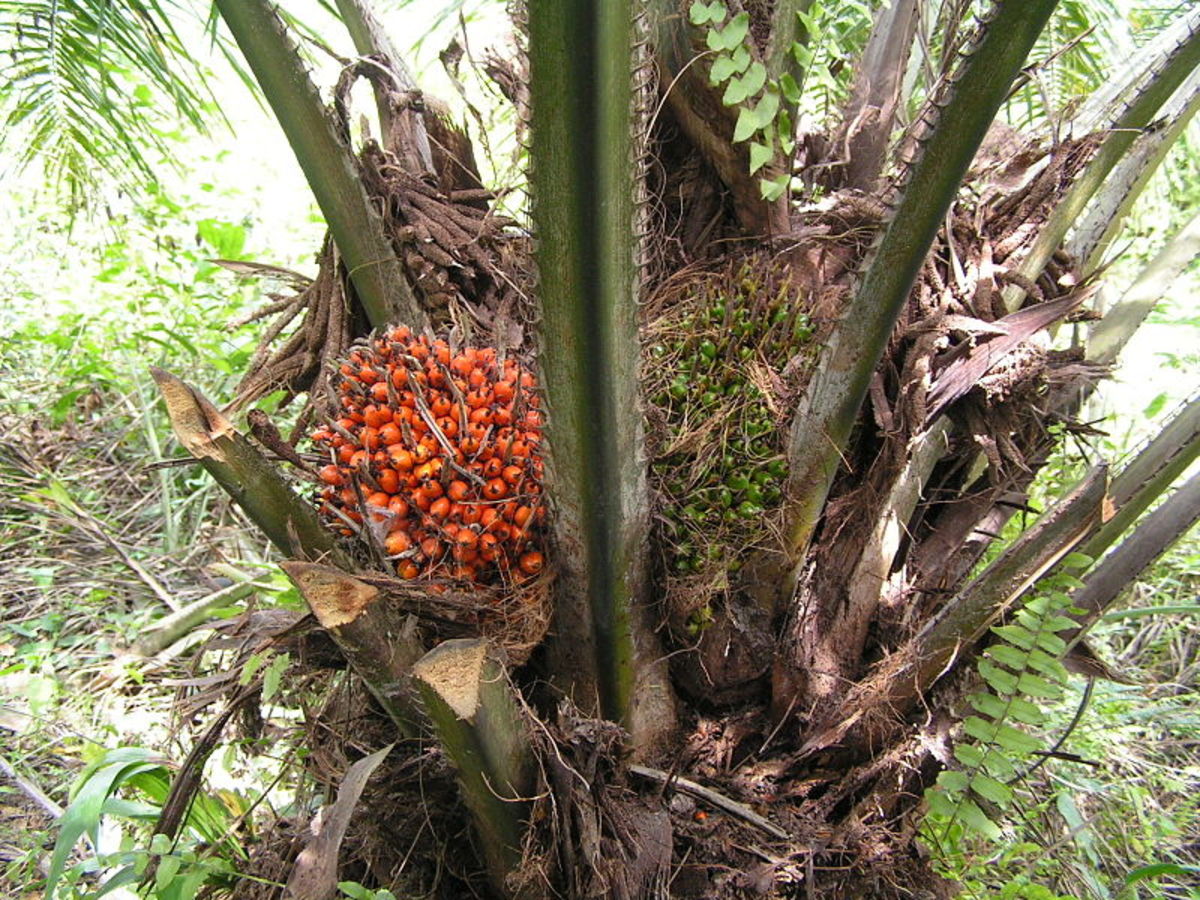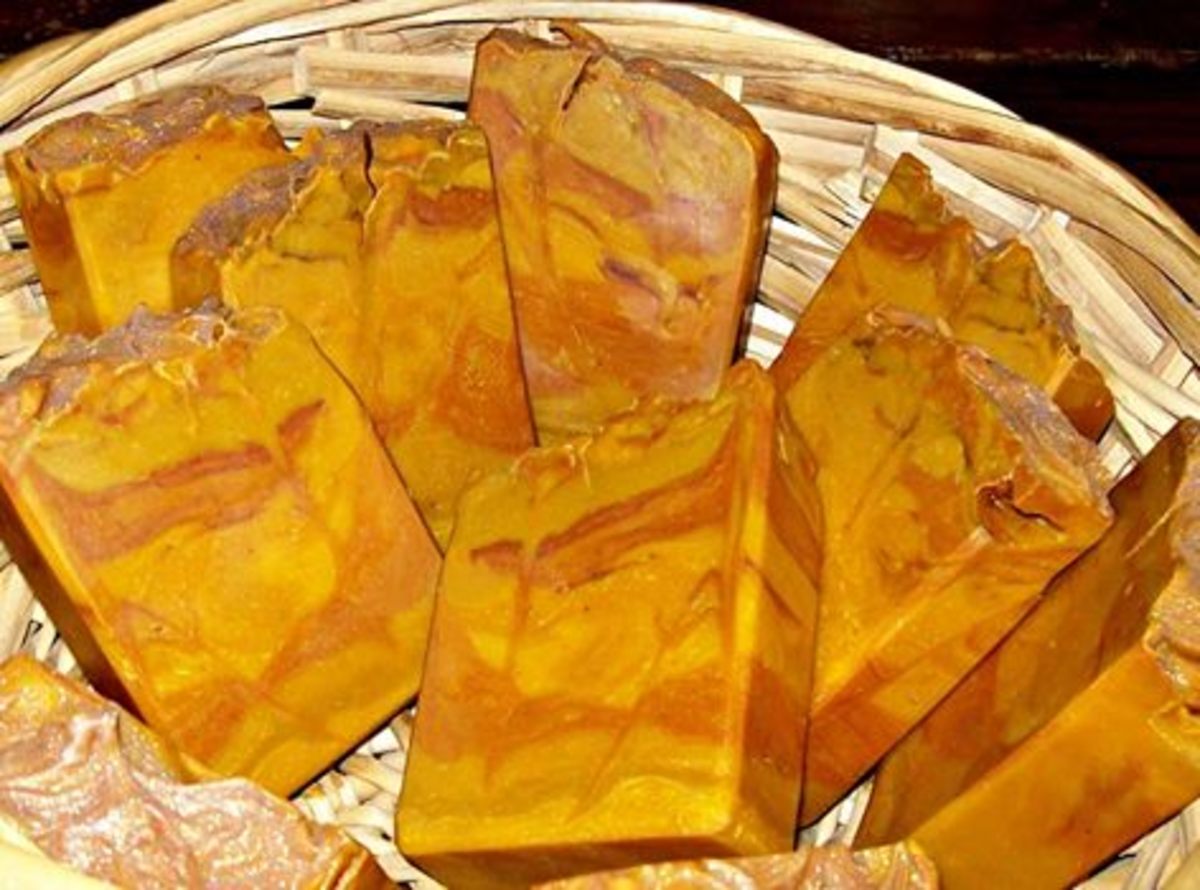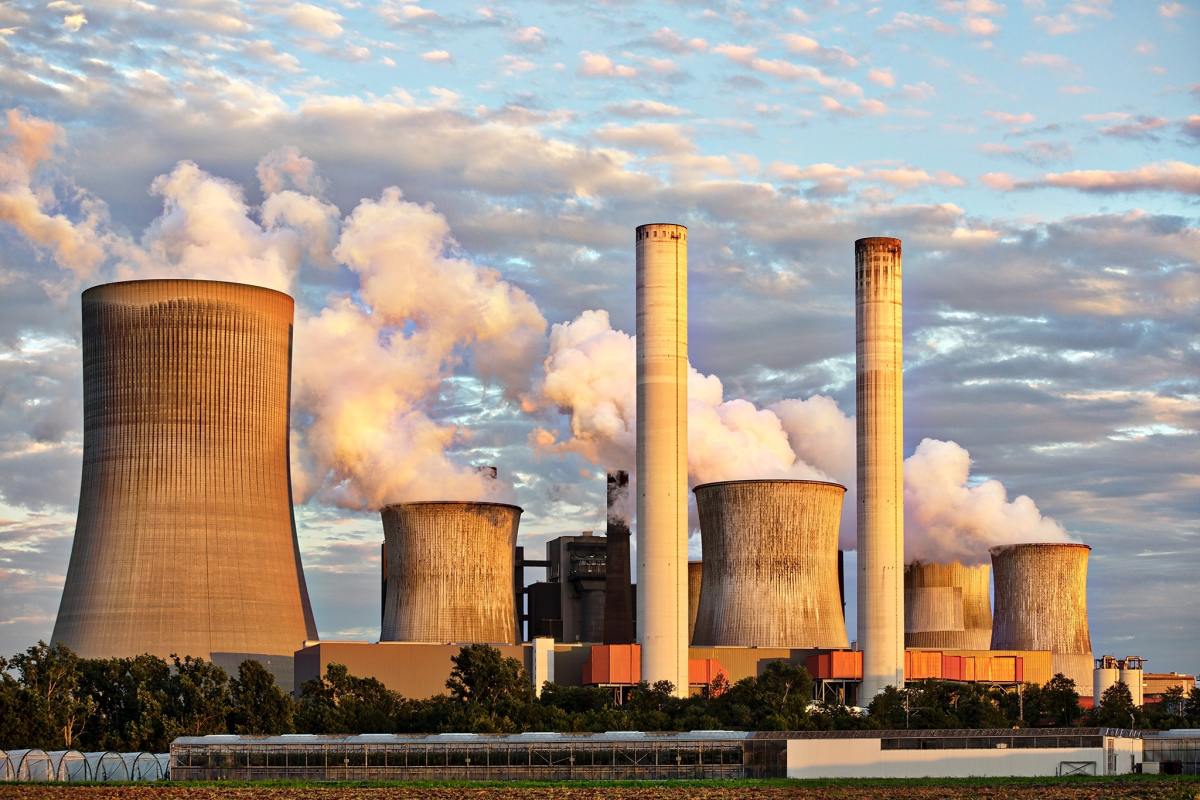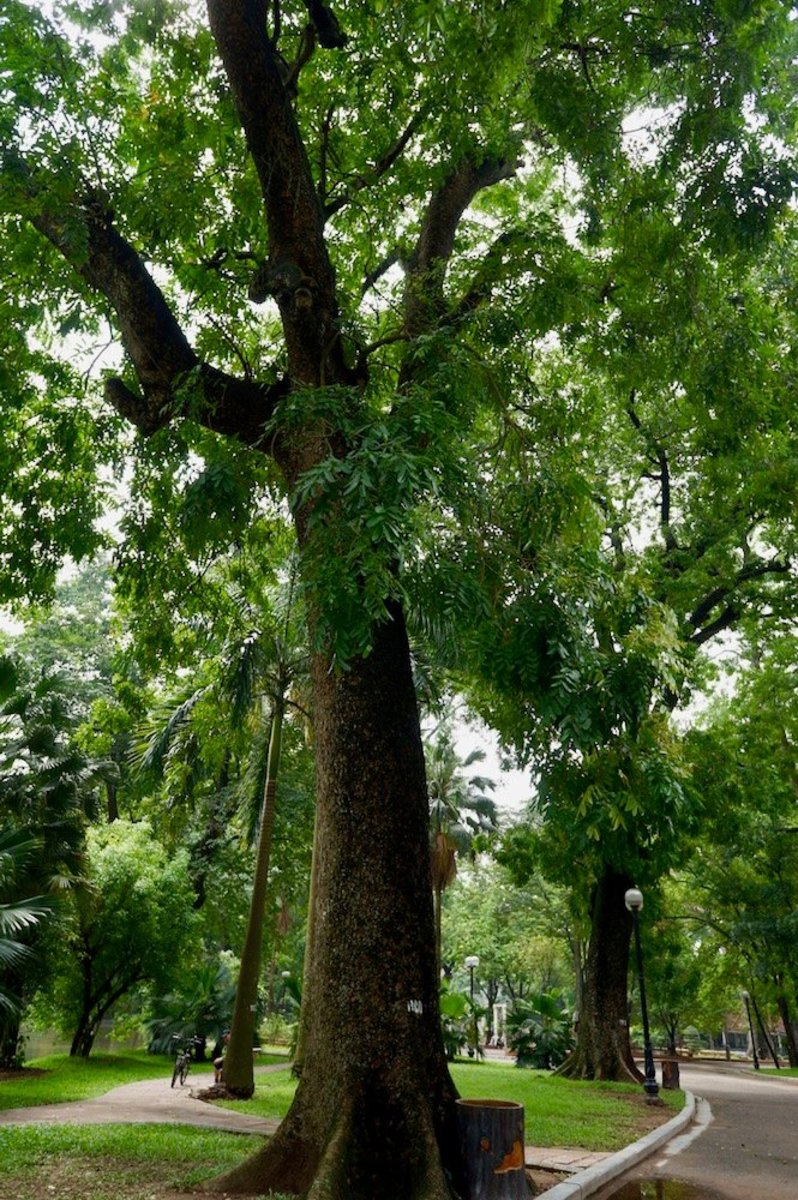The Problem With Palm Oil
Would You Trade These for Soap?
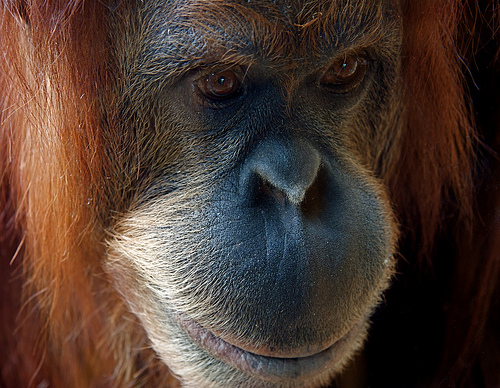

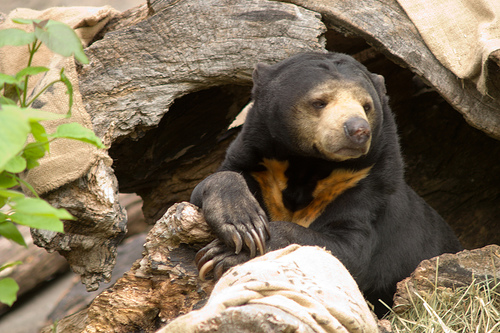
10% of all supermarket products contain palm oil, including everything from shampoo and facial soaps to candies and salad dressings.
What many consumers don't realize, however, is that palm oil plantations in Southeast Asia are driving the destruction of the rainforest, threatening already endangered animals such as the Orangutan, the Sumatran Tiger, and the Malaysian Sun Bear with extinction, destroying the livelihoods of indigenous people, and changing the climate both locally and around the world.
The Oil Palm
The Oil Palm (Elaeis guineensis) most commonly planted in Southeast Asia is actually native to Tropical Africa, where it was traditionally used as a cooking oil, but was introduced to Sumatra and Malaysia in the late 1800's and early 1900's with spectacular success.
The African Oil Palm is now the primary fruit crop in the world, thanks in part to its extraordinary productivity, and Malaysia and Indonesia are its primary producers, responsible for about 80-90% of palm oil exports annually.
Palm Oil Production is Likely to Increase, Not Decrease
Between 1990 and 2000, the amount of land devoted to palm oil production more than doubled in Malaysia and tripled in Indonesia, reaching 3.37 and 3.5 million hectares in 2002, respectively. Indonesia hopes to increase this amount to 11.2 million hectares by 2020.
Worldwide efforts to combat rising rates of heart disease caused by trans fats in partially hydrogenated vegetable oil are increasing demand for palm oil among food manufacturers, one of several alternative oils.
Ironically, palm oil has health issues of its own. Palm oil is high in saturated fat and low in polyunsaturated fat. Though not as harmful as partially hydrogenated vegetable oil, palm oil may also promote heart disease, and organizations such as the World Health Organization discourage consumption of palm oil in favor of more heart-healthy alternatives such as olive oil.
Palm oil production is also on the rise because of the growing demand for biofuels.
A single hectare of palm oil may produce as much as 6,000 liters of crude oil, compared to 446 and 172 liters per hectare for soybeans and corn, respectively. With the growing demand for alternatives to fossil fuels, palm oil producers are understandably optimistic about their future prospects. However, governments and consumers MUST demand accountability to palm oil producers for their environmental destruction and human rights abuses.
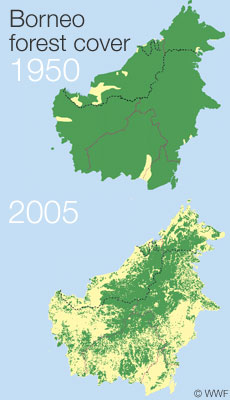
Palm Oil and Air Pollution
The fires that raged out of control in the late 90's blanketed the region in choking smog for months at a time.
In the Malaysian state of Sarwak, air pollution indices reached 846, one of the highest levels ever recorded. Any reading over 500 is considered "extremely dangerous." The smog contributed to numerous deaths, including the crash of an airliner that killed all 232 people on board.
The costs of the 1997-1998 fires, which were strengthened by record high temperatures around the world, drought and El Nino, are estimated at over $9 billion dollars from lost productivity, lost tourism revenues, health-related expenditures, and other factors.
The loss to the environment was incalculable.
Palm Oil and Deforestation
Environmental Effects of Palm Oil Production
Many traditional rainforest cultures have used "slash and burn" agriculture to clear the forest. A small area is logged and the remaining brush and fallen branches are burned. The fire not only clears the area, it also adds nutrients to the poor soil of the rainforest. The farmer plants crops for a few years, until the soil is depleted, and then moves on to start the process all over again. The surrounding forest would reclaim the land, and after a few decades of recovery, it might be used again in the same way.
The twin pressures of a growing population and agribusiness have, however, destroyed any claim "slash and burn" agriculture might once have had to sustainability.
Smallholders are still responsible for about 33% of palm oil production in Malaysia and Indonesia. As the population grows, however, farmers are forced to return sooner and sooner to previously used land, depleting it more every time and making it harder for the forest to return. The reduction in forest cover, in turn, is increasing the intensity of regional droughts, making it harder to control slash and burn fires, once set, and causing further destruction of forests.
Agribusiness has only exacerbated the problem of deforestation. Huge fires set to clear land for palm oil plantations, many of them set illegally or deliberately allowed to grow out of control, raged unchecked across vast swathes of Indonesia and Malaysia in the late 90's, blanketing the region in smog for months at a time, and reaching far into previously undisturbed regions and even protected wildlife sanctuaries and other national parks. About half of palm oil plantations are planted directly on primary or secondary forest, and the preferred location is lowland rainforest, the only remaining habitat of Southeast Asia's only great ape, the orangutan.
The wild population of the orangutan dropped by 45% in the 90's. A single huge fire in 1997-1998 was responsible for the death of 1/3 of Borneo's orangutan population, and the destruction of 5 million hectares of forest, an area larger than Switzerland. As their habitat grows increasingly fragmented, orangutans have been pushed into more frequent conflict with humans, many becoming crop pests in their efforts to find food. Defensive poaching by farm workers is becoming increasingly frequent, with orphaned youngsters often sold into the illegal animal trade. Orangutans may be extinct in the wild by 2011.
Other endangered species, including the Sumatran tiger, the Sumatran rhinoceros, and the Malaysian sun bear are under similar pressure, as is a unique subspecies of the Asian elephant. Indonesia occupies just 1.3 percent of the earth's land surface, but it is one of earth's biodiversity hotspots: home to 11 percent of the earth's plant species, 10 percent of its mammal species, and 16 percent of its bird species. Replacing virgin or secondary forest with monoculture palm plantations results in a sharp loss in biodiversity. An average of 75 mammal species make their home in undisturbed forest, compared to 13 on palm and rubber plantations.
Palm oil plantations also have a serious effect on climate change. The rainforests and peat bogs of Malaysia and Indonesia sequester millions of tons of carbon dioxide, which is released into the atmosphere when they are burned or drained. Indonesia is now the third largest producer of greenhouse gases in the world, thanks almost entirely to deforestation and peat bog conversion.
Finally, chemical pesticide and fertilizer runoff and palm oil effluents have contributed to a stunning rise in water pollution in Malaysia and Indonesia, and there are growing concerns about the effects of the pollution on fisheries and coastal ecosystems.
Palmed Off
Human Rights Abuses
In Indonesia, an estimated 60-90 million people are dependant on the forests for their livelihoods. Oil palm plantations have participated in legal and illegal land grabs from indigenous people, most of whom lack legal title to their land. An estimated 5 million more indigenous people will be evicted from their land by 2010 in West Kalimantan alone.
Some land grabs have resulted in violence and at least 500 Indonesians have been arrested and tortured as a result of their resistance.
When oil palm plantations come into a community, they often offer residents an ownership stake in the plantation of about two or three hectares. The residents borrow an average of $3000-6000 (at 30% interest) from the company to purchase oil palm seedings, fertilizers and other supplies, and work on the company's plantation to earn money to pay off the debt, at a rate of about $2.50 per day. Oil palm takes about 7 years to bear fruit, but needs large amounts of fertilizers and pesticides whether it is producing or not, which the residents must also purchase from the company. When the oil palms finally begin to produce fruit, they bring in income of about $692-900 per month (compared to about $350-1000 for multi-crop agriculture based on rubber, wood, rice, and fruit). However, the high start-up cost and need to continue purchasing large amounts of fertilizers and pesticides often leaves residents in a perpetual state of debt to the company, in a system much like the sharecroppers of the American South.
Oil palm plantations are also becoming increasingly notorious for poor working conditions.The high levels of fertilizers and pesticides required by the plants are often applied by women without proper protective clothing or training. (Women are more susceptible to the effects of pesticide poisoning than men.) Sometimes, labels are removed so the workers do not even know what chemical they are applying, let alone how to apply it safely.
Palm oil plantations are also increasingly employing foreign migrant workers, particularly in Malaysia, whose labor costs, at $4-5 per day, are already five times those of many areas of Indonesia.
Warning: May Contain Palm Oil
Learn More
- Cruel Oil (PDF)
How Palm Oil Harms Health, Rainforest & Wildlife - Greasy Palms (PDF)
Palm oil, the hidden ingredient in thousands of everyday products, is driving rainforest destruction. - Plantations Campaign: Oil Palm Plantations
An information campaign by the World Rainforest Movement - Why is oil palm replacing tropical rainforests?
Article from MongaBay.com - The Understory: palm oil
Rainforest Action Network works to protect the Earth's rainforests and support the rights of their inhabitants through education, grassroots organizing, and non-violent direct action.
Promoting Sustainable Palm Oil Production
Palm oil is not going to go away, but it can become more sustainable. It is up to governments and consumers to demand accountability for palm oil producers.
Take Action
- The Problem With Palm Oil
The Rainforest Action Network's campaign for sustainable palm oil - Friends of the Earth: Palm Oil
Friends of the Earth's work on palm oil - Roundtable on Sustainable Palm Oil (RSPO)
RSPO is an association created by organisations carrying out their activities in and around the entire supply chain for palm oil to promote the growth and use of sustainable palm oil.

